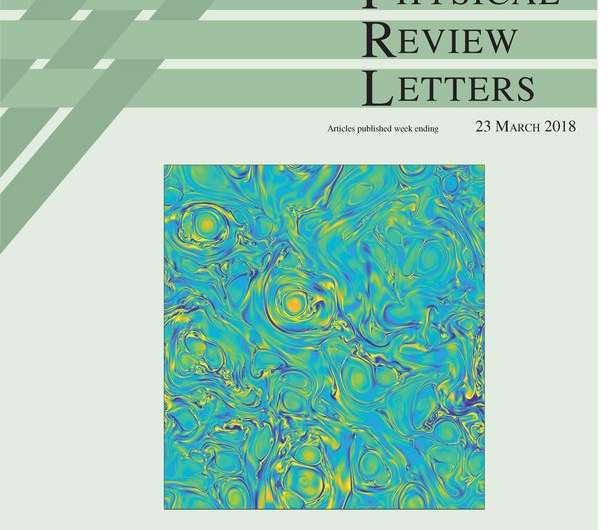Researchers simulate how 'coherent structures' affect solar wind heating

Researchers from Centrum Wiskunde & Informatica (CWI), the national research institute for mathematics and computer science in the Netherlands, have studied how solar wind particles are accelerated and heated. In particular, they discovered how coherent structures in the solar wind, where the magnetic fields and electrical currents are enhanced, affect the energy transfer responsible for heating. The results were published in Physical Review Letters on 19 March 2018.
The sun emits a constant stream of charged particles, which form the so-called solar wind. At some distance from the sun, the solar wind is hotter than expected, which means some process is still heating the particles even after they leave the solar atmosphere. One of the outstanding questions in space physics is where and how this heating takes place. The longstanding hypothesis is that the sun causes turbulence in the emitted solar wind. That turbulence stirs the solar wind, and thus further accelerates and heats the particles.
In many turbulent flows, large-scale motions (big whirls) affect small-scale motions (little whirls). That means there is an energy transfer between motions on different scales. This is also the case in the turbulent solar wind. However, in solar wind, the way in which the energy transfer happens, turns out to be surprising. The researchers found that the energy transfer is very inhomogeneous: it happens only in specific locations. In fact, 80 percent of the energy transfer happens in about 50 percent of the space.
In a paper published in Physical Review Letters, CWI researcher Enrico Camporeale, together with colleagues from Italy and France, addresses why this is the case. They found that certain structures in the solar wind, where the magnetic field and the electrical currents are enhanced, are responsible for the inhomogeneity. These structures naturally emerge in all turbulent low density plasma's, of which solar wind is an example. They are typically in the form of elongated sheets where the magnetic field and the electrical currents are higher than elsewhere.
The work leads to a better understanding of the plasma turbulence in solar winds. A deep understanding of this phenomenon is necessary to develop better forecasts of harmful solar events, such as energetic solar wind particles that can damage satellites and electrical power grids.
To reach their conclusion, the team used high-resolution simulations, run at the Italian supercomputer center CINECAB. By using an innovative space-filter technique, they have been able to calculate the amount of energy transfer from large to small scales in different regions of the simulation, and to quantify the importance of coherent structures.
More information: E. Camporeale et al. Coherent Structures and Spectral Energy Transfer in Turbulent Plasma: A Space-Filter Approach, Physical Review Letters (2018). DOI: 10.1103/PhysRevLett.120.125101
Journal information: Physical Review Letters
Provided by Centrum Wiskunde & Informatica



















